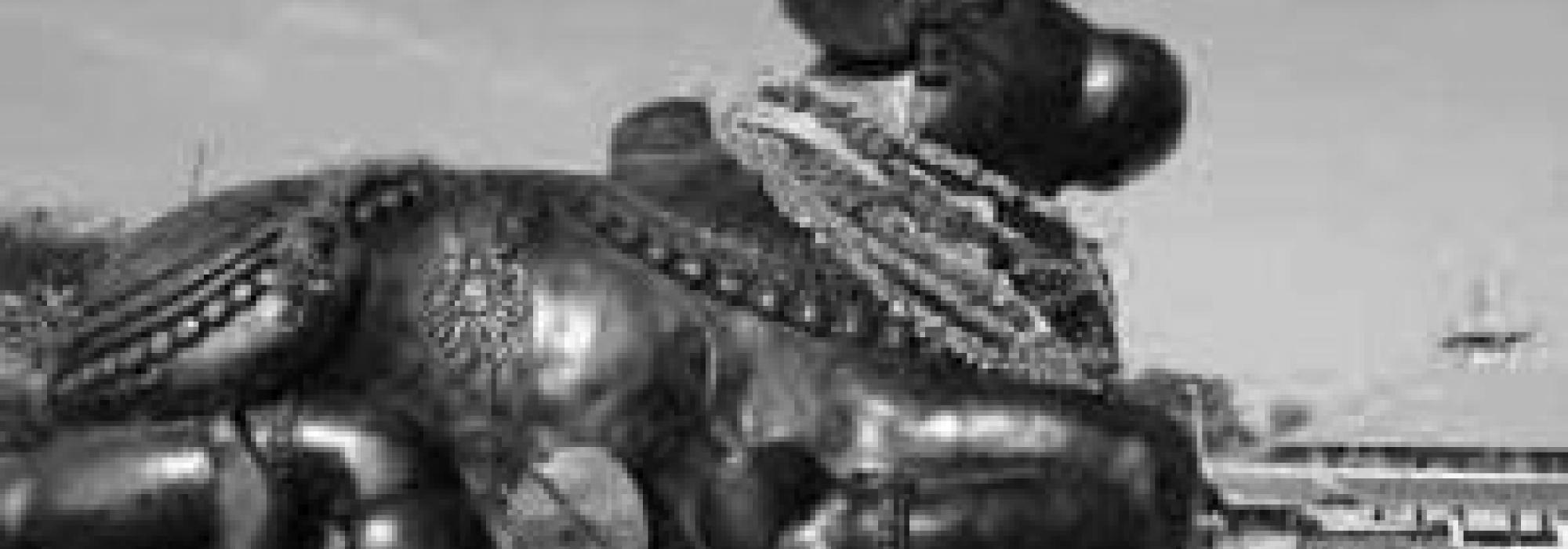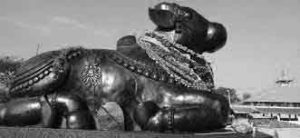It was night-time. Sometime during 1914-15. Venkatanaranappa visited my house and said, “I had been to Mysore the day before yesterday to attend the senate meeting. Mirza saheb[1] was there. He is a senate member and an old disciple of mine. He was seated next to me and he asked me, ‘Sir, do you know the editor of The Karnataka[2]?’ I replied, ‘Yes, I know him well. His father and I are good friends.’ Encouraged, Mirza saheb continued, “He writes well. His English is great. I’d love to meet him. Will you please request him to meet me at my father’s residence near Richmond Road in Bangalore?’ Filled with joy, I said, ‘Definitely. What’s the difficulty in that?’ Will you be kind enough to help me keep my word?” A request made by a person such as Venkatanaranappa is like the order given by someone in the position of a guru. Even earlier, Diwan Visvesvaraya had suggested to me once or twice that I should meet Mirza Ismail. I had said, “What work do I have with him?” and had requested to be excused. But this time I did not have the heart to do so. Mirza Ismail deeply respected Venkatanaranappa. Whenever Venkatanaranappa visited Mysore, either for a meeting of the Citizens Representative Assembly or for a senate meeting, he typically stayed at Nanjaraja Bahadur Choultry or elsewhere. The very next morning, Mirza Ismail would be there to meet his teacher. Venkatanaranappa, having bathed and worn a fresh dhoti, would be in the process of preparing his breakfast; he would be bare-chested. Mirza saheb would stand and chat with him. In this manner, for about ten to fifteen minutes, Mirza Ismail would enquire about his teacher; else he would not be satisfied. Venkatanaranappa never hesitated to utter harsh words. If he spoke a word that Mirza saheb could feel proud of, he would speak two words that would make him touch his heart and contemplate upon his actions. “It’s all non-sense, this modern fashion,” Venkatanaranappa used to complain frequently. Mirza Saheb would laugh; he would ask, “Who else can dare to say so?”
An Obsession
One of the obsessions of Mirza Saheb was to reduce the heights of the compound walls of temples. His opinion about those of houses was similar. His intention was this – “Each house has a lawn and a garden with flowering plants; why should such joy not reach the eyes of everyone? There’s no need for walls in between houses; a wire fence will do. If one stands at the end of a row of houses, he should be able to see the continuous, vivid splash of colorful flowers that decorate the garden of each house. Even a pedestrian should reap the benefit of such a beautiful sight.” Venkatanaranappa would say, “What you say is right, but only in places where people are refined and noble. Ours is not such a country. This is a place where thieves won’t spare a house even when it has a compound wall. Therefore, your idea won’t work in this country.”
In the matter of the Basavanna temple, Mirza saheb gave advice that was in line with his obsession. “The compound wall to the west of the temple is too elevated. The road just outside of it is a wide road and an important one; the passers-by can’t enjoy the beauty of the temple. The mukhamaṇṭapa (front pavilion) of the temple is splendid. The gopura (ornate tower at the entrance) is beautiful. If the height of the western wall is reduced, it will bring joy to everyone passing by the road!” Venkatanaranappa strongly condemned this decision: “Sir, already the Hindus are angry at you and unhappy with you. I know that it’s all baseless. But there are many people waiting to betray you. If you interfere in the matters of Hindu temples, you would only be giving them more power. Those people will misrepresent you and drag your name in the mud. Please stay away from the temples. This is my final opinion.” I can say that Mirza saheb whole-heartedly respected these words of his well-wisher. He truly believed that Venkatanaranappa was free from malice and a man of integrity.
The Parishad Hall
It was during 1932–33; the Parishad[3] had just shifted to the current building.[4] One morning, Diwan Mirza Ismail came towards the Parishad, riding on his horse as usual. He was accompanied by a small group of friends. He told them, “I must pay my respect to my revered teacher.” Saying so, he dismounted from his horse and entered the Parishad building. At that time, Venkatanaranappa was in one of the rooms, busy writing something. He stood up the moment he saw his disciple. After enquiring about his teacher’s welfare, Mirza Saheb asked: Mirza Ismail: “Which is your lecture hall?” Venkatanaranappa: “This is our lecture hall.” M: “This is a room. I want to see your hall; I mean the sabhāmaṇṭapa, the meeting hall.” V: “This is itself our sabhāmaṇṭapa.” M: “What! Is this where you conduct meetings? Not even twenty or thirty people can be accommodated here.” V: “If there are enough people to fill this hall, we’ll be happy! Who’s interested in listening to Kannada?” M: “My master has always been a pessimist. Mr. Tandoni Rao, knock down those two walls. That will make this a proper hall.” Then he said, “I am off to Talaghattapura now. I will return by noon. Then I will come here again. May I hope to see a rough structure of the hall by then?” Tandoni Rao: “I will get it done.” The same afternoon Mirza saheb returned and was satisfied with the work done. That’s how the present Parishad hall was constructed.
This is an English translation of the eighteenth chapter of D V Gundappa’s Jnapakachitrashaale – Vol. 3 – Sahityopasakaru. Edited by Hari Ravikumar.
Footnotes
[1] A reference to Sir Mirza Ismail, who would later become the Diwan of Mysore (1926–41).
[2] An English newspaper that D V Gundappa established in 1913; he published and edited it until 1921.
[3] A reference to the Kannada Sahitya Parishad.
[4] DVG probably wrote this essay in the 1960s.













































